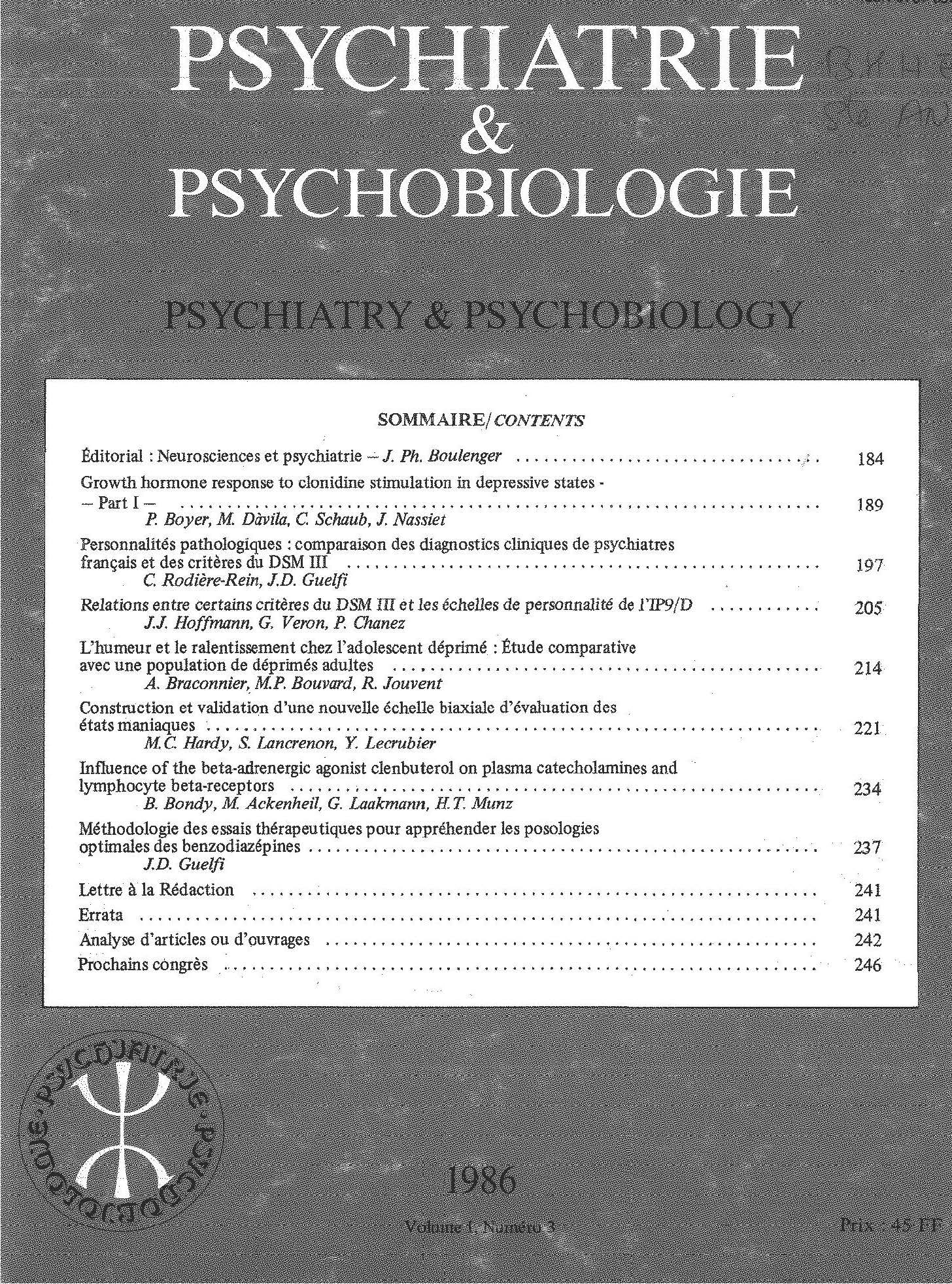Article contents
The epidemiology of affective disorders: national secular trends and local findings
Published online by Cambridge University Press: 28 April 2020
Summary
This paper examines aspects of the epidemiology of affective disorders in Scotland. Results from 3 investigations are described, each one indicative of a particular research approach (the use of national, case-register and direct-interview based data). In Part I of the paper secular trends in Scottish national and local (Edinburgh city) first admission rates of affective disorders, based upon ICD-9, are examined. The results, based upon the national data, show that during the last two decades the male admission rate declined by 29.4% and the female rate by 37.3%. However, the female rate has remained 1.8 to 2.2-fold that of the male rate throughout this period. Further investigation of these changes was undertaken after dividing the affective disorder category into either the “affective psychoses” or the “depressive neuroses”. Results revealed that whilst there was only a slight change in the Scottish national rate of affective psychoses, marked decreases in rates were revealed for the depressive neuroses for both sexes (males by 39.4% and females by 39.3%). Age-specific secular trends also demonstrated the extent to which the older age groups of both sexes experienced the highest rates of affective psychoses.
Results based upon first admissions for affective disorder to the Royal Edinburgh Hospital over the years 1976-1987 showed that the overall male rate had remained relatively unchanged, whilst that for females had declined by about 24%. Subsequent analysis showed that the rates for affective psychoses had declined over the 12 years to a level which for the females was close to the national rate but that the male rate for these conditions had remained (in 1985) at 70% above the Scottish national rate.
Part II of this paper presents results from two further studies concerned with investigating rates of affective disorder amongst women. The first of these was a general population survey of a random sample, the second a hospital study. Both studies were designed to be complementary, in that each was based upon samples of women living in the same geographical area of Edinburgh city. Results revealed that the hospital prevalence estimate for affective disorders was only about 1% of the community estimate, but over 5% of the community inception rate. Analyses examining the demographic correlates of affective disorders revealed the extent to which age and marital status differentially determined the ease with which women entered hospital care. Results revealed that being single and of older age was associated with an increased chance of receiving treatment for women with affective disorders.
Résumé
Cette étude examine des aspects de l'épidémiologie des troubles affectifs en Ecosse. Les résultats de 3 enquêtes sont décrits, chaque enquête ayant une approche spécifique de recherche (l'utilisation de données obtenues de sources nationales des statistiques des hôpitaux et de par des entrevues directes). Dans la première partie, nous examinons les changements séculaires dans le taux des premières admissions à l'hôpital en Ecosse en général et localement (dans la cité d'Edimbourg) pour les maladies affectives, d'après l'ICD-9. Les résultats basés sur les données nationales démontrent que dans les 20 dernières années, le taux d'admissions pour hommes a décru de 29,4% et le taux pour femmes de 37,3%, bien que pendant toute cette période, le taux d'admission des femmes soil resté 1,8-2,2 fois celui des hommes. Nous avons étudié ces changements plus en détails en divisant la catégorie de troubles affectifs en «psychoses affectives» et «névroses dépressives». Les résultats démontrent que, tandis qu ‘il n'y a qu'un faible changement dans le taux national des psychoses affectives en Ecosse, ily a une importante baisse dans le taux des névroses dépressives pour les 2 sexes (hommes –39,4% et femmes –39.3%). Les données démontrent une association positive pour les deux sexes entre le taux de psychose affective et l'âge.
Les résultats basés sur les premières admissions au Royal Edinburgh Hospital pour les années 1976-1987 démontrent que, bien qu'en général le taux des hommes est resté relativement constant, celui des femmes a décru à peu près de 24%. Une analyse subséquente a révélé que le taux des psychoses affectives des femmes avait décru sur la période de 12 ans jusqu'au niveau national, mais que le taux des hommes était resté (en 1985) à 70% au-dessus du niveau national écossais.
La deuxième partie de cet exposé présente les résultats de 2 autres études concernant l'investigation des taux de troubles affectifs parmi les femmes. La première donne un compte rendu, d'une analyse d'un échantillon tiré au hasard de la population générale et la seconde examine les patients d'un centre hospitalier. Notre intention était que les 2 études se complémentent, en ce que chacune est basée sur un échantillon de femmes habitant la même région géographique de la ville d'Edimbourg. Les résultats indiquent que, dans le centre hospitalier, la prévalence des troubles affectifs était seulement de 1% de celle de la communauté générale, mais que ces troubles représentaient plus de 5% du taux d'incidence dans la communauté. L'examen des facteurs démographiques a démontré l'effet de l'âge et de l'état civil sur l'admission des femmes dans un centre hospitalier. Il est plus probable que les femmes célibataires et plus âgées souffrant d'un trouble affectif soient traitées à l'hôpital.
Keywords
- Type
- Original article
- Information
- Copyright
- Copyright © European Psychiatric Association 1989
Footnotes
Paper presented at the Association of European Psychiatrists, European Congress in Strasbourg, October 19-22 1988 Symposium, “Epidemiology of Affective Disorders”.
References
- 2
- Cited by



Comments
No Comments have been published for this article.